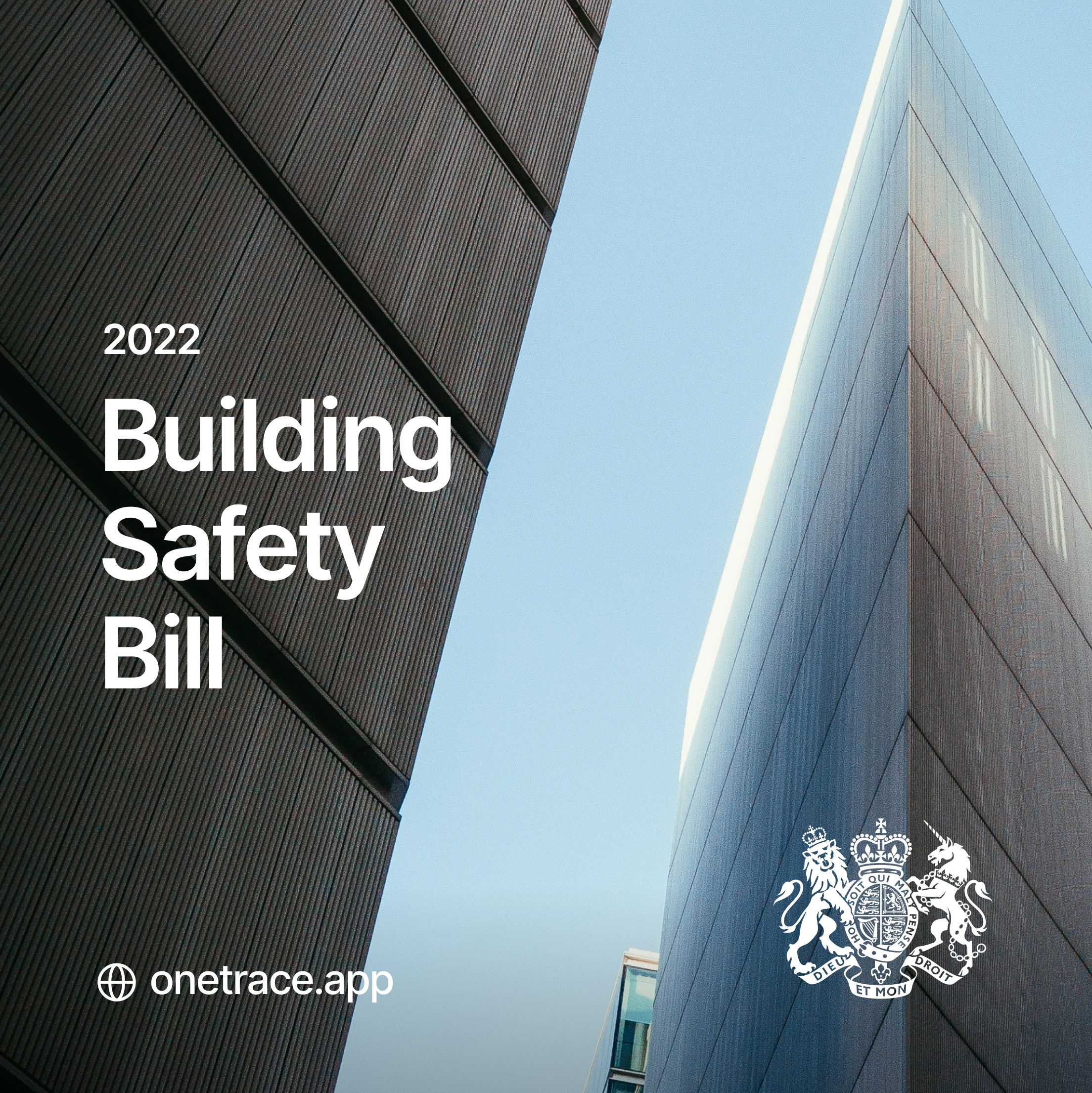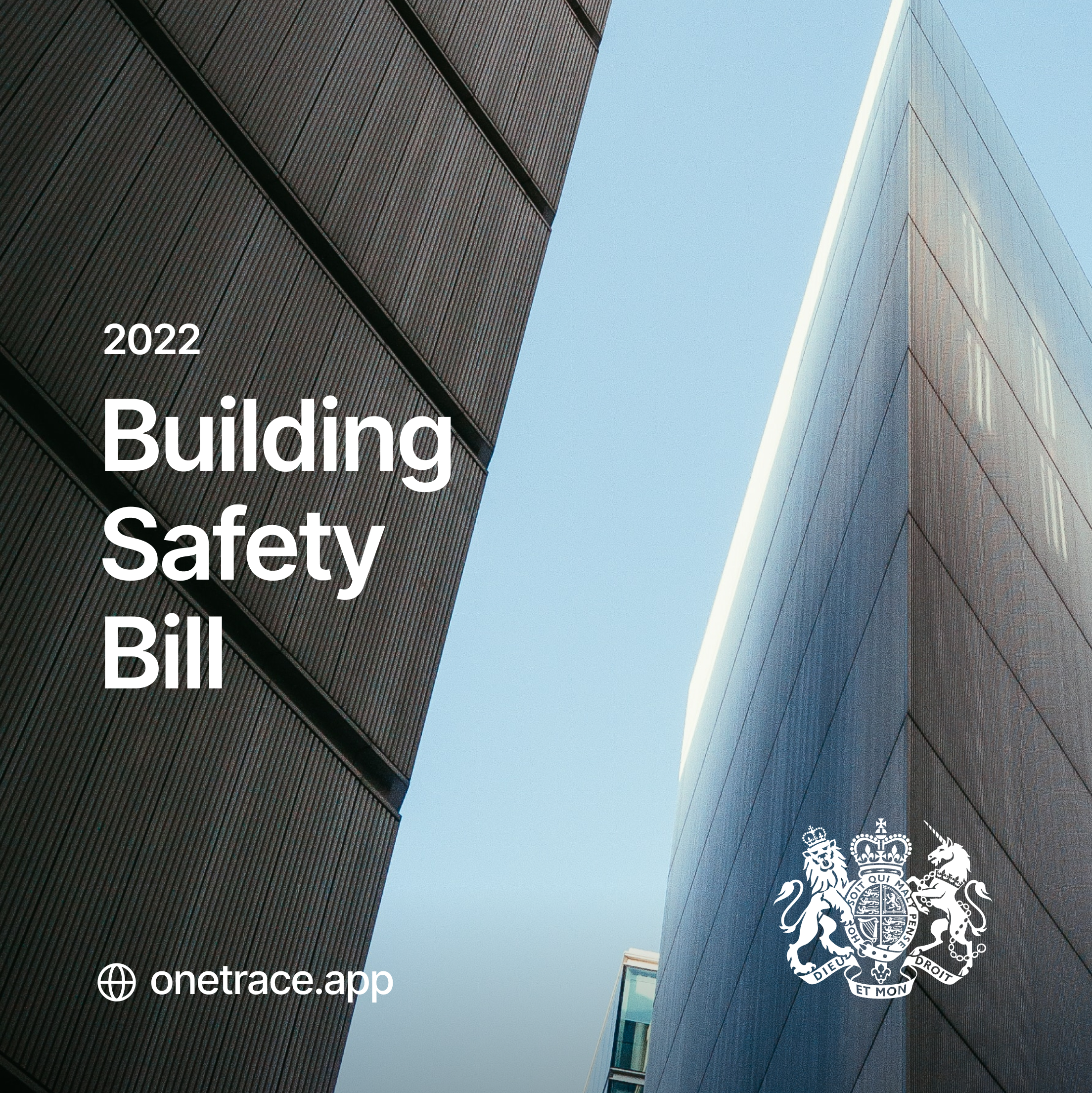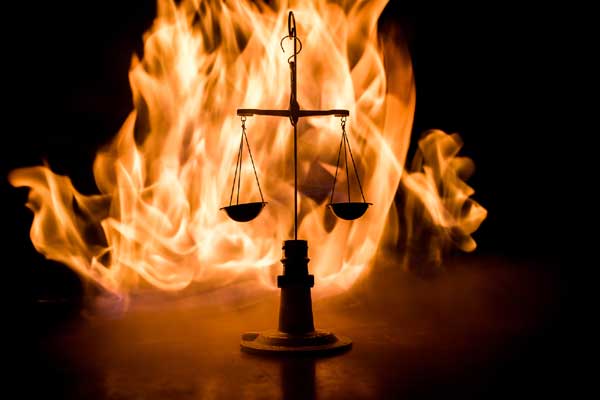Building Safety Bill 2022: A Quick Summary and Guidance

Interested in seeing Onetrace in action?
Let one of our representatives take you around the system.
Building Safety Bill 2022: A Quick Summary and Guidance

June 14, 2017, was the day of the Grenfell Tower Fire tragedy where the high-rise building was engulfed in flames for about 60 hours with countless individuals left at the mercy of the fire. Some ended up as casualties, while some were heavily injured, but all were left aghast with broken hopes.
After the dust settled and utter confusion dissipated, it was the need of the hour to consider why such a tragic incident transpired in the first place to ascertain whether or not it could have been avoided.
Every chaotic instance usually comes with a silver lining in disguise. In the case of the Grenfell Tragedy, on July 20th, 2020, a draft building safety bill was presented to Parliament as a handbook that should be used as a construction guide. The aim is to ensure that all buildings in the United Kingdom are regulated and built following the correct fire protection standards and audited for compliance timely.
Through the course of this blog, we'll walk you through everything there is to know about the Building Safety Act and more.
What Does the Building Safety Bill Aim to Resolve?
The bill will implement stricter regulations for all apartment buildings. Especially those who are categorised as ‘Higher-Risk Buildings' (HRBs) and are either 18 metres or more in height or over 7 stories tall, as suggested by Dame Judith Hackitt in her Independent Review of Building Regulations and Fire Safety. It also seeks to improve industry standards and ensure greater accountability for building owners and contractors.
As a means of resolution, this act will establish a clear, concise framework from the design team to the overall construction and management of the buildings as a means to create a structured system that establishes accountability, manages risk, and assures the safety of those residing in HRBs.
From Building Safety Bill to Building Safety Act 2023
The Building Safety Bill was introduced in the parliament in July 2021 having received the Royal Assent in 2022, it is likely to be fully implemented by October 2023. This simply means that by the end of October 2023, all buildings must be registered.
It is a key step that is going to stronghold building legislation, laws, and guidance around the pertaining issue of fire safety. Most importantly, the Building Safety Act 2022 will alter how buildings are designed, built, and managed while also assisting individuals in feeling safer in their surroundings.
What Are Some of The Key Areas the Building Safety Act Will Focus On?
-
Ensure that the standards and the safety of every building in the United Kingdom are in line with the pre-set requirements.
-
Closely look at the buildings that fall under the category of higher-risk buildings (HRBs) and ensure they are safe against all factors while under construction and once inhabited.
-
Ensure that the people entrusted to take care of the buildings are competent to oversee, manage and suggest the necessary work to ensure that the buildings and the residents are not in harm's way.
-
Building Safety Act seeks to standardise the guidance around the design, construction and management of all buildings in the United Kingdom especially the ones classified as higher-risk buildings (HRBs).
-
This act is based on the notion of safeguarding the residents of every building to pave the way for a new and streamlined system ensuring building safety.
To Whom Does the Building Safety Act Apply To?
- Building Owners
- Building Managers
- Construction Industry
- Personnel that commission building works in the United Kingdom
- Personnel responsible for commissioning design work (clients, designers and contractors)
Key Takeaways from the Building Safety Act
- Any building that exists or is to be commissioned which is 18 metres tall or has a minimum of seven floors with a minimum of two residential units is directly impacted under this new act.
- Care homes and hospitals that fall under the same specifications also fall under this belt and therefore their construction and refurbishment need to cater to the guidance that is laid out in the building safety act.
- This act sheds light on the responsibilities of the accountable person of a building with regard to fire and building safety that is to be religiously followed throughout the lifecycle of any building that is considered to be within the category of higher-risk buildings (HRBs) and otherwise.
- This act works around the fundamentals of safeguarding the residents of every building.
- It acts as a functional guide for the contractors, sub-contractors and designers whilst also ensuring that all regulations were adhered to during the construction and maintenance phase and throughout the lifecycle of any build.
- Creates a broad shift in the construction sector's accountability culture.
What Are the Two New Roles Defined Under the Building Safety Bill?
The Building Safety Regulator (BSR)
Think of the Building Safety Regulator (BSR) as an authoritative body that is responsible to oversee the safety of a building and ensure that all performance systems of the building are functioning optimally. The BSR will oversee the operations and has the power to enforce rules and regulations and prosecute anyone who fails to abide by them.
Especially, in the case of buildings that fall under the group of ‘high-risk buildings (HRBs)’, the BSR is entitled to advocate stricter rules and has a say in how the design, construction and occupancy are commissioned.
The BSR’s three main functions are:
- Control the performance of the building in both the public and private sectors, as well as comprehend and provide advice on current and new building standards and safety hazards, to monitor the safety and performance system for all buildings.
- By creating competency standards for the registration of building control specialists and directing an industry-led competence committee, to promote competence across the industry.
- Lead the implementation of the new regulatory framework for higher-risk buildings, with the authority to consult with other groups, such as the Fire Service, when making decisions about building safety regulations.
The Accountable Person
To assess building safety risks and follow through with the new stringent measures and rules, every building will have an appointed accountable person who will shoulder the responsibilities as defined in the building safety act 2022. In the case where the ownership of a building is complex, there might be multiple individuals acting as the accountable person, however, one would then be identified as the Principal Accountable Person.
Every accountable person (could be a building owner, freeholder or even a management company) will have to provide a 'Safety Case Report' which will categorically demonstrate all identified risks, ways to mitigate those risks and how they'll be managed recurrently in the future.
Duties That Every Accountable Person Performs Are:
- Assess all buildings and actively seek any safety risks in an inhabited higher-risk building.
- Taking rational steps to prevent the occurrence of any fire-related incident or minimise the damage in case one occurs.
- Maintaining a 'Safety Case Report' which contains key information such as identified risks, steps taken to mitigate the risks and managing the building on a regular basis.
- The accountable person can appoint a building safety manager to help manage structural safety on a day-to-day basis.
- Submit key documents to the BSR to get a completion certification.
- Register the building and apply for a Building Assurance Certificate.
What Are the Building Safety Bill's Primary Topics of Interest?
- Competence
The responsibility to ensure that everything is done with absolute competence is entirely on the clients, contractors, and designers. In the case of Principal Contractors and Designers, it further extends to compliance with the Act too.
- The Golden Thread of Information
Maintaining a streamlined digital log of all key information is central to this act, wherein a digital audit trail that holds key information throughout the lifecycle of any building must be maintained.
This Golden Thread of Information is a defining element that will further assist in enhancing the security of all buildings and their occupants.
- Duty Holder Clarification
Every individual who is involved in building a project will have definitive duties such as the principal designer, designer, principal contractor or contractor.
Moreover, any individual who during any time of the construction or refurbishment puts the building at any risk will be asked to manage the risk and also be answerable to any compliance issue that will come with it.
-
Gateway
The gateway approach has three phases. All building works new or old will be under the control of the BSR and must adhere to the gateway approach.
Gateway 1: During the planning stage of any building work, special consideration must be given to the aspect of fire safety, especially in the case of high-rise builds.
The designers now must submit a fire statement alongside their planning application and seek confirmation from the BSR before proceeding with any building work.
Gateway 2: The application should be holistic and have a detailed summary of how the construction would comply with the legal requirements, how the golden thread of information would be carried out and maintained, strategies to manage the construction whilst decreasing the risks involved and so on.
Under no circumstance can the construction commence unless proper approval has been granted by the BSR.
Gateway 3: This phase focuses on ensuring that the construction is going as planned and that the accountable person has been notified of all the changes that are taking place. Once the construction phase is over, the contractor will have to seek a 'Completion Certificate' from the BSR before making the building accessible for use.
Also, once this certificate is issued, the accountable person will register the building after which the building can be legally occupied.
Lastly, within 6 months of registration, the accountable person will have to submit a 'Safety Management System' document which in this case would be based on the principle of the 'Golden thread of Information'.
Can You Start Construction Without the Approval from the BSR?
In simple words no and if done it will be considered an offence and the regulator holds the ground to prosecute at any instance of a breach. Also, a few inspections during different phases of the construction period would be carried out.
It could be in the form of a site inspection, or simply a request to share the golden thread of information or provide proof of compliance being followed at every step of the construction.
In light of these new legislative changes that affect both the construction and fire safety industries, Onetrace will assist you to manage your workflow and allow you to inspect the work carried out by your operatives remotely, ensuring greater quality control and staying in line with accreditations and compliance.
Spearhead your business to the next level by using our ever-innovating platform that offers complete traceability and transparency. Click this link to book your free demo now.
Disclaimer: The material and information contained on this website is for general purposes only. You should not rely upon the material or information on the website as a basis for making any business, legal or any other decisions. Whilst we endeavour to keep the information up to date and correct, Onetrace Ltd makes no representations or warranties of any kind, express or implied about the completeness, accuracy, reliability, suitability or availability with respect to the website or the information, products, services or related graphics contained on the website for any purpose. Any reliance you place on such material is therefore strictly at your own risk. Onetrace Ltd will not be liable for any false, inaccurate, inappropriate or incomplete information presented on the website. Although every effort is made to keep the website up and running smoothly, due to the nature of the internet and the technology involved, Onetrace Ltd takes no responsibility for and will not be liable for the website being temporarily unavailable due to technical issues (or otherwise) beyond its control or for any loss or damage suffered as a result of the use of or access to, or inability to use or access this website whatsoever.
Related posts

Overshot Your Budget? This Is How Onetrace Can Assist
Managing a successful business comes with a lot of nitty-gritty aspects. From budgeting to managing...

All You Need to Know about the Accountable Person and Fire Risk Assessment
Did you know there were 548,881 recorded incidents of fire by the end of June 2022 within the...

Learn All About Fire Doors in 5 Easy Pointers
“At the end of the day, the goals are simple: safety and security - Jodi Rell”
